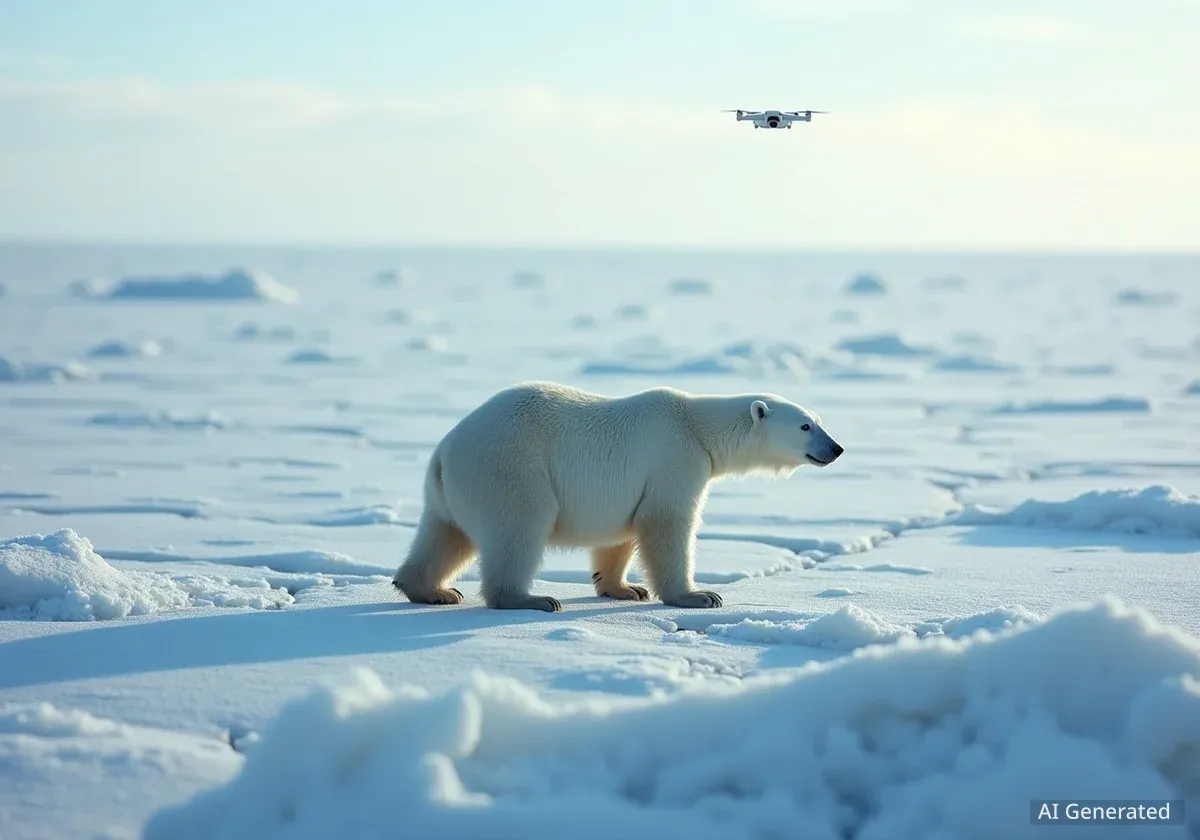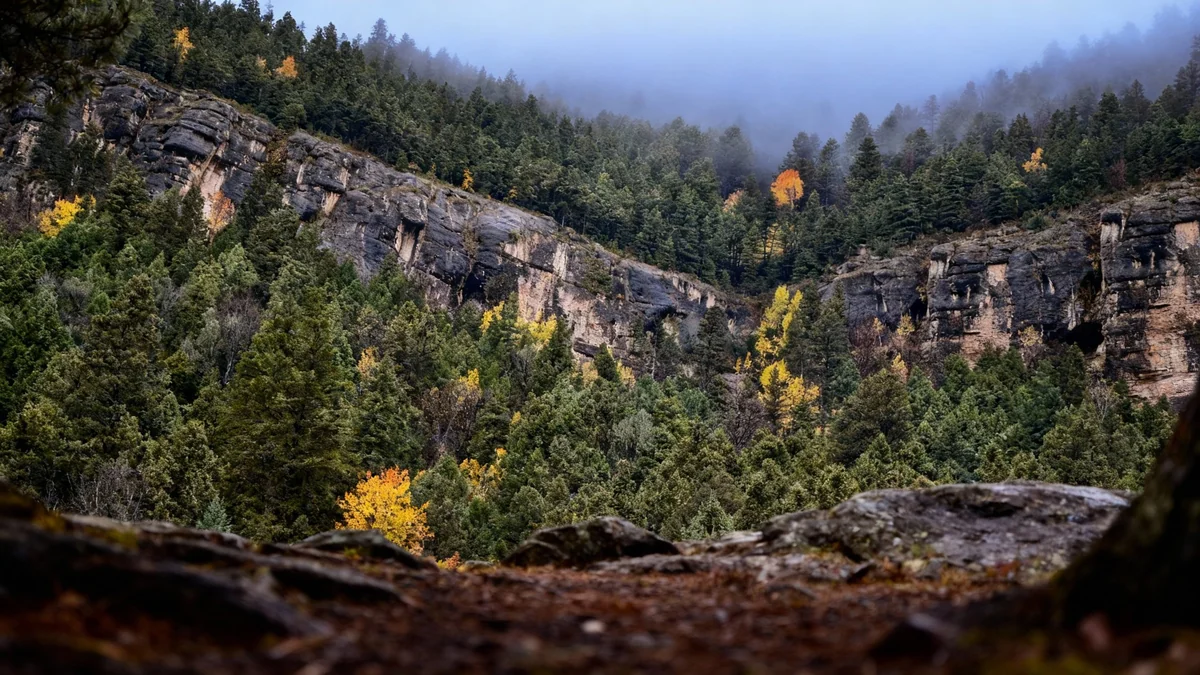The Natural History Museum in London has announced the winners of the prestigious Wildlife Photographer of the Year 2025 competition. This year's grand prize was awarded to Wim van den Heever for his striking image of a brown hyena in Namibia. The winning photographs, selected from thousands of global entries, highlight both the beauty and fragility of the natural world.
Key Takeaways
- Wim van den Heever won the Grand Prize for a photo of a brown hyena.
- The exhibition opens at the Natural History Museum on October 17.
- Photos showcase diverse species and environmental challenges globally.
- Many winning images highlight conservation issues like habitat loss.
Grand Prize Winner: A Decade of Patience
Wim van den Heever's winning photograph, featuring a brown hyena, represents a decade of dedicated effort. He captured the image in Kolmanskop, a deserted diamond mining town in Namibia. Van den Heever used a camera trap after noticing fresh hyena tracks in the area. The brown hyena is known for its nocturnal habits and solitary nature, making it particularly difficult to photograph.
Interesting Fact
The brown hyena is the rarest of all hyena species. They are primarily nocturnal, meaning they are active during the night, and often live alone. This makes capturing a clear photograph of them in their natural habitat a significant challenge.
For many years, Van den Heever searched the abandoned town for signs of the elusive animal. He initially believed that photographing one would be nearly impossible. His persistence ultimately paid off with the award-winning shot.
"I knew they were there, but actually photographing one was just never going to happen," van den Heever reflected on his long search.
The announcement took place at London's Natural History Museum. The annual exhibition, showcasing all the winning entries, will open to the public on October 17.
Junior Grand Prize and Category Winners
The competition also recognized young talent and a range of categories, each presenting a unique perspective on wildlife and its environment. Andrea Dominizi from Italy secured the Junior Grand Prize and the 15- to 17-year-old category win for his photograph, titled "After the Destruction."
Andrea Dominizi: After the Destruction
Dominizi's image shows a beetle resting on a cut log next to abandoned machinery in Italy's Lepini Mountains. This area was once heavily logged for its ancient beech trees. His photograph powerfully illustrates the impact of habitat loss on animal species.
"This photo shows the story and challenge faced by many animal species: habitat loss," Dominizi explained. "In this case, it's a beetle that loses the tree and the wood it needs to lay its eggs."
Background on Habitat Loss
Habitat loss is a primary threat to biodiversity worldwide. It occurs when natural environments are destroyed or significantly altered, making them unable to support the species that live there. This can be caused by deforestation, agriculture, urbanization, and climate change, leading to population declines and extinctions.
Animals in Their Environment
Shane Gross from Canada, a previous winner, took home the prize in the Animals in their Environment category with "Like an Eel out of Water." He spent weeks observing peppered moray eels scavenging for food at low tide on D'Arros Island in the Seychelles. He endured hours in the sun, heat, and flies, waiting for three eels to emerge near washed-up dead fish.
Jamie Smart: The Weaver's Lair
In the 10 Years and Under category, Jamie Smart from the UK captured "The Weaver's Lair." On a cold September morning in Mid-Wales, Smart discovered an orb-weaver spider curled inside its silk shelter. She expressed pride in showing an animal that many people fear.
Wetlands and Aquatic Life
Sebastian Frölich from Germany won the Wetlands: The Bigger Picture category for "Vanishing Pond." His photo highlights Austria's Platzertal moorlands, a fragile wetland ecosystem. These areas are crucial as carbon sinks and habitats for various wildlife. Austria has lost an estimated 90% of its peat bogs, emphasizing the importance of Frölich's work.
Ralph Pace: Survival Purse
In the Underwater category, Ralph Pace from the USA captured "Survival Purse" in Monterey Bay, California. Despite strong currents, Pace photographed a swell shark egg case, revealing a glowing embryo with visible gill slits and a yolk sac. Swell sharks rely on kelp forests to lay their eggs, making them vulnerable to the significant decline in kelp. Researchers estimate Monterey Bay's kelp has decreased by more than 95% in the past 34 years.
Diverse Wildlife Portraits and Behaviors
Philipp Egger from Italy won the Animal Portraits category for "Shadow Hunter." For over four years, Egger observed an eagle owl's nest from a distance in Naturns, South Tyrol. Eagle owls are among the world's largest owls, weighing about twice as much as buzzards. These nocturnal hunters often use the same nesting sites on cliffs or in crevices for many years.
Qingrong Yang: Synchronised Fishing
Qingrong Yang from China received the Behaviour: Birds award for "Synchronised Fishing." His image, taken at Yundang Lake, Fujian Province, shows a ladyfish catching prey directly beneath a little egret's beak. Yang frequently visits the lake to document these intense feeding moments.
Dennis Stogsdill: Cat Amongst the Flamingos
For Behaviour: Mammals, Dennis Stogsdill from the USA captured "Cat Amongst the Flamingos" at Ndutu Lake in Tanzania's Serengeti National Park. Caracals are known for their ability to leap and catch birds, but observations of them hunting flamingos are very rare.
Conservation and Photojournalism
Jon A Juárez from Spain won the Photojournalism category with "How to Save a Species." After years of following the BioRescue Project, Juárez documented a significant moment in rhino conservation: the first successful transfer of a rhino embryo to a surrogate mother. Although the southern white rhino fetus in the image did not survive due to infection, this milestone proved that IVF could be a viable method for rhino reproduction. This brings scientists closer to saving the critically endangered northern white rhino.
Rhino Conservation Efforts
The northern white rhino is one of the most endangered species globally, with only two females remaining. Advances in assisted reproductive technologies, like IVF, offer a glimmer of hope for their survival by creating viable embryos for future generations.
Javier Aznar González de Rueda: End of the Round-up
Javier Aznar González de Rueda, also from Spain, won the Photojournalist Story category. His portfolio, "End of the Round-up," explored the complex and often conflicting human views of rattlesnakes across the USA, ranging from deep respect to fear and persecution.
Invertebrate Wonders and Oceanic Scenes
Georgina Steytler from Australia won the Behaviour: Invertebrates category for "Mad Hatterpillar." Her photo, taken in Torndirrup National Park, Western Australia, features a gum-leaf skeletoniser caterpillar with its unusual tower of discarded head capsules. Each time the caterpillar molts, it adds a new head capsule to the stack, a behavior thought to confuse predators.
Audun Rikardsen: The Feast
Audun Rikardsen from Norway won the Oceans: The Bigger Picture category with "The Feast." During a polar night in Norway's Kvænangen Fjord, Rikardsen photographed gulls swarming around a fishing vessel. The birds were attempting to catch fish trapped in the nets. His image aims to highlight the ongoing conflict between seabirds and the fishing industry, as many birds drown in purse seine nets each year.
Plants, Fungi, and Artistic Vision
Chien Lee from Malaysia received first place in the Plants and Fungi category for "Deadly Allure." His photograph, taken in Kuching, Sarawak, Borneo, Malaysia, illustrates how some carnivorous pitcher plants reflect UV light to attract prey. These plants use color, scent, and nectar to lure insects. Lee used a long exposure and a UV torch to capture this effect.
Luca Lorenz: Watchful Moments
The Rising Star award went to Luca Lorenz from Germany for "Watchful Moments." While photographing mute swans on an urban lake in Germany, a coypu unexpectedly entered his frame, creating a unique moment.
Simone Baumeister: Caught in the Headlights
Simone Baumeister from Germany won the Natural Artistry category for "Caught in the Headlights." On a city bridge in Ibbenbüren, North Rhine-Westphalia, Baumeister photographed an orb-weaver spider silhouetted against traffic lights. She achieved a kaleidoscopic effect by reversing one of the six glass elements in her lens, framing the spider artistically.
Impact and Portfolio Awards
Fernando Faciole from Brazil received the Impact Award Winner 2025 and was highly commended in Photojournalism for "Orphan of the Road." At a rehabilitation center in Belo Horizonte, Brazil, Faciole photographed an orphaned giant anteater pup following its caregiver. His photograph aims to raise awareness about road collisions, a major threat to these animals.
Alexey Kharitonov: Visions of the North
Alexey Kharitonov, representing Israel/Russia, won the Portfolio Award category for "Visions of the North." Using a drone, Kharitonov captured the rapid transition from summer to winter across taiga forests and Arctic tundra. One image features a recently frozen lake in Svetlyachkovskoye Swamp, showing snow-dusted dark circles with crack-like veins. His portfolio beautifully documents the dramatic seasonal changes in these northern landscapes.
The Wildlife Photographer of the Year exhibition serves as a powerful reminder of the planet's diverse ecosystems and the urgent need for conservation efforts. Each photograph tells a story, from the quiet patience of a photographer to the dramatic struggles of wildlife in a changing world.




